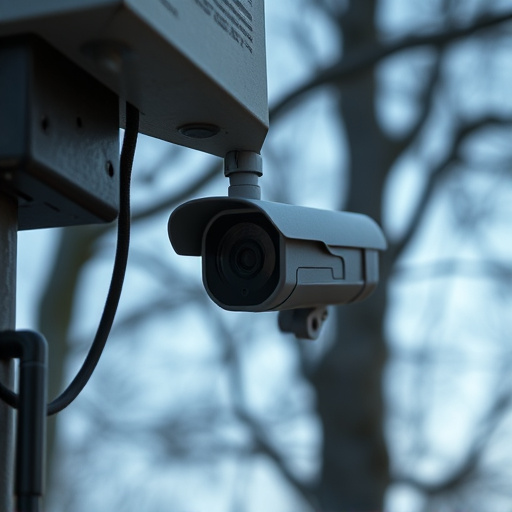Creating most realistic looking security decoys requires understanding night light interactions with materials to minimize reflections using advanced optics and material selection. Glint detection algorithms leveraging image processing, computer vision, and machine learning differentiate genuine light sources from reflective surfaces. Advances in deep learning architectures like CNNs improve detection accuracy. Research focuses on intricate details, authentic camera lens glints, high-quality materials, textures, shadows, positioning, and testing under changing night conditions to blur the line between reality and deception.
In the realm of security surveillance, enhancing the realism of decoy cameras is paramount to deterring potential intruders. This article explores an innovative method for camera lens glint detection during night, a game-changer in creating the most realistic-looking security decoys. We delve into understanding the technical intricacies of glint identification algorithms and offer practical tips to elevate the effectiveness of these decoys. Discover how this approach revolutionizes nighttime surveillance, ensuring optimal protection.
- Understanding Night-Time Glint for Decoy Cameras
- Technical Aspects of Glint Detection Algorithms
- Enhancing Realism: Practical Tips and Tricks
Understanding Night-Time Glint for Decoy Cameras
Nighttime glint, a subtle yet powerful visual cue, plays a pivotal role in the effectiveness of security decoy cameras. These reflections, created when light sources like streetlamps or moonlight bounce off reflective surfaces, can expose the presence of hidden cameras, compromising their realism and the overall security strategy. In the context of deploying most realistic-looking security decoys, understanding and mitigating these glints are essential to maintain authenticity.
By meticulously studying how light interacts with various materials at night—from smooth metal surfaces to intricate camera lens designs—researchers and manufacturers can craft decoy cameras that mimic genuine behavior. This involves employing advanced optics and careful material selection to minimize unwanted reflections, ensuring the decoys remain undetected by both human observation and malicious actors seeking to compromise security systems.
Technical Aspects of Glint Detection Algorithms
The technical underpinnings of glint detection algorithms are crucial in crafting the most realistic-looking security decoys. These algorithms employ a combination of image processing, computer vision, and machine learning techniques to identify and differentiate between genuine light sources and reflective surfaces that could mimic them. By analyzing various features such as edge detections, texture analysis, and color distributions within an image, these algorithms can accurately distinguish between glints caused by natural lighting and those produced by artificial means, like security cameras or mirrors.
The advancement in deep learning architectures has significantly enhanced the accuracy and robustness of glint detection systems. Neural networks, particularly convolutional neural networks (CNNs), are trained on vast datasets encompassing diverse scenarios to learn complex patterns associated with glints. This enables them to adapt to varying environmental conditions, including different camera angles, lighting setups, and surface textures, ultimately resulting in more effective security measures. The ongoing research into these algorithms aims to further refine their capabilities, making them indispensable tools for enhancing the effectiveness of security decoys, ensuring maximum realism and deterrence.
Enhancing Realism: Practical Tips and Tricks
To create the most realistic-looking security decoys, pay attention to subtle details that enhance overall authenticity. Start by studying real camera lens glints in various lighting conditions; this reference will help you replicate genuine reflections accurately. Utilize high-quality materials and precise manufacturing techniques to ensure the decoy closely resembles an actual camera lens or device. Play with textures, reflecting surfaces, and shadows to add depth and realism.
Experimenting with different positioning and angles can significantly impact the final result. Consider using multiple decoys placed at varied heights and distances to mimic a genuine security setup. Regularly test your setups under changing night conditions, adjusting as needed to maintain the most realistic appearance. Remember, the goal is to create an environment where the line between reality and deception becomes blurred, making your security measures more effective.
The advancement in glint detection algorithms, as discussed, offers a robust solution for enhancing the realism of security decoys, ensuring they remain effective against sophisticated threats. By understanding and leveraging night-time glint characteristics, we can create the most realistic-looking decoys, fooling even the most vigilant perpetrators. This innovative approach to visual deception is transforming the landscape of security systems, providing a game-changer for safeguarding valuable assets in today’s digital era.
